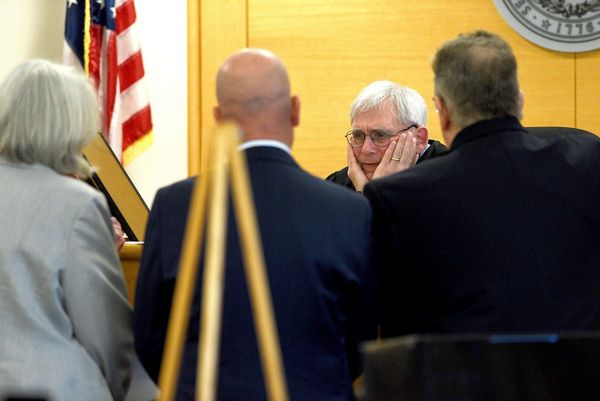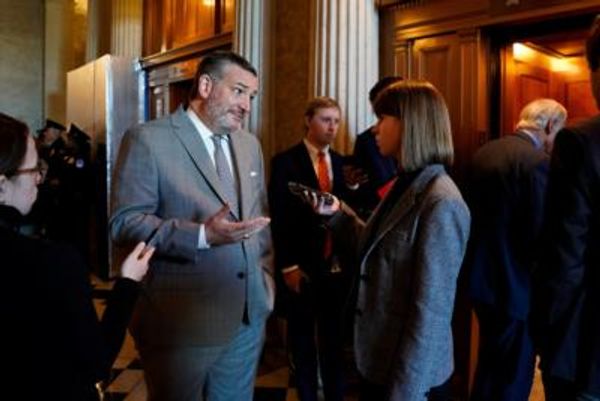
The Australian government must “urgently” accelerate its plans on closing the gap in Indigenous life outcomes after the unsuccessful voice referendum, according to the top representative body of Aboriginal and Torres Strait Islander community organisations.
The Coalition of Peaks has also suggested Labor should convene a “proper process to bring together Aboriginal people” to decide the future of the Uluru statement and its calls for voice, truth and treaty.
“In the meantime, we urgently need to get on with closing the gap and the Coalition of Peaks want to see funding for our communities hitting the ground now,” its acting lead convener Catherine Liddle told Guardian Australia.
After the defeat of the referendum, which failed to win a majority in any state, the prime minister, Anthony Albanese, said the government would “consult on Indigenous Australians about a way forward”.
But three months on from the 14 October vote, little has emerged on Labor’s next plans in Indigenous affairs policy to bridge yawning gaps in life outcomes between Aboriginal and non-Aboriginal Australians. Indigenous-led organisations and senior figures in the yes campaign have questioned when new steps may be outlined, with some privately supporting the notion of government proceeding with legislated models for truth, treaty and voice.
The Coalition of Peaks, a representative body of more than 80 Aboriginal and Torres Strait Islander community-controlled peak organisations, met with the Indigenous Australians minister, Linda Burney, in November 2023 to discuss next steps.
Liddle, also the chief executive of the SNAICC (Secretariat of National Aboriginal and Islander Child Care) National Voice for our Children, said the Coalition of Peaks wanted to see further funding for Indigenous issues as soon as possible.
“The Coalition of Peaks have put a proposal to the Albanese government on what could be done to accelerate efforts to implement the national agreement and close the gap in the wake of the failed referendum and we are working with the government on this,” she said.
Liddle said the coalition wanted to ensure “all governments fulfil the commitments they have already made”, which she said included having Aboriginal and Torres Strait Islander people “at the table with governments” in decision-making.
“We know that Aboriginal people overwhelmingly voted for a voice. We voted for change and to improve our life outcomes. The Coalition of Peaks remain resolute and committed to bring about the change communities voted for,” she said.
The Productivity Commission is expected to hand down the final report of its review into the national agreement on closing the gap in early February. The government is expected to table its latest Closing the Gap report in mid-February, where further announcements on next steps in Indigenous affairs policy could be outlined.
Liddle said the Closing the Gap report should be accompanied by “significant and adequate funding” announcements, including a legislated closing the gap fund.
“We need funding to get to our communities urgently so that they can start to see the change all hoped for. We haven’t had a huge injection to support closing the gap since 2008 when it was around $5bn,” she said.
Burney told Guardian Australia in November the government was “taking our time” with setting its next plans, admitting that “might be frustrating to some people”, but flagging that truth-telling was being considered.
In a statement this week, she said the government had “unwavering” commitment to working improving outcomes.
“The status quo remains unacceptable – we can all agree that we need to do more to address the inequality faced by many Aboriginal and Torres Strait Islander people,” Burney said.
She said consultations she had conducted continued to raise priorities of health, jobs, education and housing, as well as “the importance of better understanding about our shared story and history.”
Labor has remained tight-lipped on the future of the Uluru statement, which Albanese has publicly committed to on numerous occasions – most prominently in his May 2022 election night victory speech.
Albanese did not answer a recent question at a press conference on whether Labor would advance truth and treaty processes, while the future of the Makarrata commission remains in limbo.
Liddle said any “significant changes” on Indigenous affairs policy, which she said would include the possibility of legislating parts of the Uluru statement, must be decided with Indigenous people.
“It is very important that there is a proper process to bring together Aboriginal people to agree what happens next on the Uluru statement and that any engagements are conducted in line with the national agreement on closing the gap,” she said.
What form a truth-telling process takes should be a negotiation between the government and Aboriginal community representatives. This will take some time.
“It is clear from the referendum outcome that Australia needs a truth-telling process on our collective history and on the constitution itself, how it works and how it was developed.”







